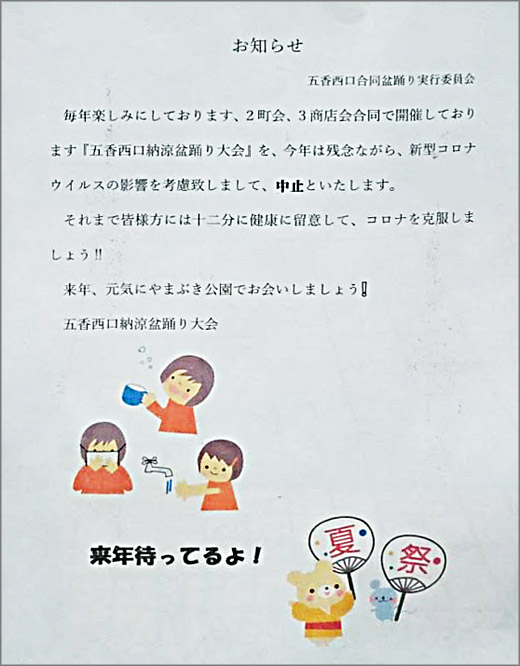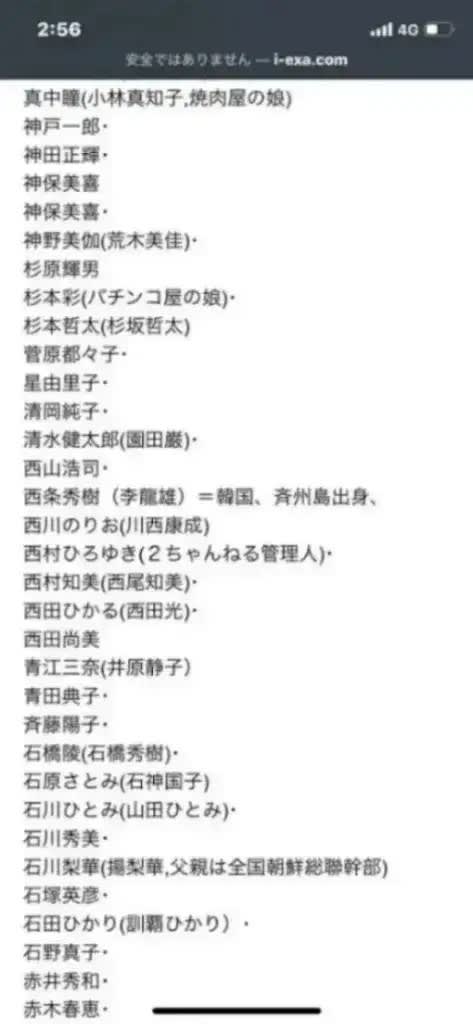アヴェ・マリア・インマクラータ!
愛するM君、
こんにちは!教皇が不可謬性をキリストから受けえるさらに別の条件に、次があります。
●教皇は「信仰と道徳についての教義」を「守るべき信仰と道徳」であると「定義」して、教義を信じるように強制しなければなりません。
●さらに、「全教会」が守るべきものとして、全教会に向けられるものでなければなりません。
もしも教皇が、全世界の教会(普遍の教会 Universal Church)に対して、教義の定義を明確にせずに、教える場合にはこの条件を満たすことが出来ません。従って、誤りの可能性を除外することが出来ません。
「信じるべき教えを定義する」
信仰の内容を明確に、読み、理解し、信じることが出来るように言い表すこと、これが定義です。
たとえば、今日流行の「エキュメニズム」「信教の自由」「良心の自由」「第二バチカン公会議の精神」などは、一体何なのか、明確な定義がありません。曖昧な概念にすぎません。
もともと、第二バチカン公会議の新しい教えは、啓示された信仰の遺産ではありませんが、もしもたとえそうであったとしても(M君のために繰り返すが、本当はそうではない)、曖昧な概念のままでは、不可謬の対象にはなりません。
ピオ九世が、無原罪の御孕りのドグマを定義したとき、「無原罪の御孕り」とは何かをはっきりと定義しました。
「いとも聖なる童貞マリアが、その御孕り(受精)の最初の瞬間において、人類の救い主であるイエズス・キリストの功徳を先見し、全能の天主によって授与された特別の聖寵と特権により、現在のすべての汚れから免れていたという教えを、天主によって啓示された教えであり、従ってすべての信徒によって固くかつ常に信じられなければならないと、私は宣言し、発表し、定義する。」(Ineffabilis Deus, ピオ九世 1854年12月8日)
Declaramus, pronuntiamus et definimus doctrinam quae tenet beatissimam Virginem Mariam in primo instanti suae conceptionis fuisse singulari Omnipotentis Dei gratia et privilegio, intuitu meritorum Christi Jesu Salvatoris humani generis, ab omni originalis culpae labe praeservatam immunem, esse a Deo revelatam, atque idcirco ab omnibus fidelibus firmiter constanterque credendam.
あるいは、例えば、トリエント公会議では、「全実体変化」という言葉について、明確に定義しました。
第4章 全実体変化について
Dz1642(877)私たちの贖い主キリストは、パンの形色のもとでささげたそれを(マテオ26・26以下、マルコ14・22以下、ルカ22・19以下、1コリント11・24以下参照)正に自分の体であると仰せられたので、天主の教会において常に確信されたことをも、この聖なる公会議は、今繰返して宣言する。すなわち、パンとブドー酒の聖別によって、パンの全実体は私たちの主キリストの御体の実体と変化し、ブドー酒の全実体は主の御血の実体に変化する。この変化は、聖なるカトリック教会によって、相応しく且つ適切に、全実体変化と言い表わされた(第2条)。
Quoniam autem Christus redemptor noster corpus suum id, quod sub specie panis offerebat (cf Mt 26.26ss; Mc 14.22ss; Lc 22.19s; 1 Co 11.24ss), vere esse dixit, ideo persuasum semper in Ecclesia Dei fuit, idque nunc denuo sancta haec Synodus declarat: per consecrationem panis et vini conversionem fieri totius substantiae panis in substantiam corporis Christi Domini nostri, et totius substantiae vini in substantiam sanguinis ejus. quae conversio convenienter et proprie a sancta catholica Ecclesia transsubstantiatio est appellata (can.2).
“By the consecration of the bread and wine there takes place a change of the whole substance of the bread into the substance of the body of Christ our Lord and of the whole substance of the wine into the substance of his blood. This change the holy Catholic Church has fittingly and properly called transubstantiation” (Session XIII, chapter IV).
Dz1652(884)2条。いとも聖なる御聖体の秘跡において、パンとブドー酒の実体が、私たちの主イエズス・キリストの体と血とともに残ると、もしも誰かが言ったとするなら、また、パンとブド一酒の形色だけは残しつつも、パンの全実体が御体に、またブドー酒の全実体が御血になるというかの素晴らしい変化(この変化をカトリック教会は、極めて適切に全実体変化と呼ぶ)を否定したとするなら、彼は排斥される(DzS1642参照)。
2. Si quis dixerit, in sacrosancto Eucharistiae sacramento remanere substantiam panis et vini una cum corpore et sanguine Domini nostri lesu Christi, negaveritque mirabilem illam et singularem conversionem totius substantiae panis in corpus et totius substantiae vini in sanguinem, manentibus duntaxat speciebus panis et vini, quam quidem conversionem catholica ecclesia aptissime transsubstantiationem appellat: anathema sit.
“If anyone denies that in the sacrament of the most Holy Eucharist are contained truly, really and substantially the body and blood together with the soul and divinity of our Lord Jesus Christ, and consequently the whole Christ, but says that He is in it only as in a sign, or figure or force, let him be anathema” (Session XIII, Canon I). 43
以上の例から、カトリック教会が教えを定義するやり方を見ることが出来ます。もしも教皇や公会議が教義を定義することをしないなら、つまり、信ずべき内容についての明確で決定的な説明を与えないなら、不可謬性を行使したとは言えません。不可謬権の行使のために必要なことは、教皇が、決定的で信じなければならないことを、明確に、表明するという意図です。それがあった場合、教皇が一人であれ、あるいは、公会議の文脈であれ、不可謬性によって誤謬から免れている、ということです。
しかも、そのようにして不可謬性を行使した教えを含む文書全体に、不可謬性が必ずしも適応されるとは言えず、その教義決定のあるその部分だけに掛かっているだけです。
詳しくは、Dogmatic Theology, Volume II, Christ's Church, by Monsignor G. Van Noort, S.T.D.の次の部分をご覧ください。一部を引用します。
The teaching office of the Church or, as they say, “the teaching Church,” is made up of those to whom God entrusted the right and the duty to teach the Christian religion authoritatively. The words “in matters of faith and morals in such a way as to require of everyone full and absolute assent” are included in the proposition because, according to Catholic teaching, the Church's rulers are infallible not in any and every exercise of their teaching power; but only when, using all the fulness of their authority, they clearly intend to bind everyone to absolute assent or, as common parlance puts it, when they “define” something in matters pertaining to the Christian religion. That is why all theologians distinguish in the dogmatic decrees of the councils or of the popes between those things set forth therein by way of definition and those used simply by way of illustration or argumentation. For the intention of binding all affects only the definition, and not the historical observations, reasons for the definition, and so forth. And if in some particular instances the intention of giving a definitive decision were not made sufficiently clear, then no one would be held by virtue of such definitions, to give the assent of faith: a doubtful law is no law at all.
従って、もしも、カトリック教会が、教皇が(あるいは公会議が)全教会にある特定の教えを強制しようとしたのか疑問に思い、論争し、果てしのない議論が続くようなとき、そのような教えは不可謬性を帯びているとは言えません。法であるか否か疑いのある法は、法ではないからです。
聖伝にしたがえば、この教えを強制するということを明確にするためによく使われるのが、anathema sit (彼は排斥される)です。つまり、もしも誰かがこれこれしかじかのことを信じないなら、あるいは、否定するなら、破門される、信仰を失ったことになる、という表現です。
第二バチカン公会議には、このような、明確な強制の表現はありませんでした。
したがって、第二バチカン公会議は、不可謬性を行使したわけではありませんでした。
この項は続きます。
天主様の祝福が豊かにありますように!
トマス小野田圭志神父(聖ピオ十世会司祭)
![]()
愛するM君、
こんにちは!教皇が不可謬性をキリストから受けえるさらに別の条件に、次があります。
●教皇は「信仰と道徳についての教義」を「守るべき信仰と道徳」であると「定義」して、教義を信じるように強制しなければなりません。
●さらに、「全教会」が守るべきものとして、全教会に向けられるものでなければなりません。
もしも教皇が、全世界の教会(普遍の教会 Universal Church)に対して、教義の定義を明確にせずに、教える場合にはこの条件を満たすことが出来ません。従って、誤りの可能性を除外することが出来ません。
「信じるべき教えを定義する」
信仰の内容を明確に、読み、理解し、信じることが出来るように言い表すこと、これが定義です。
たとえば、今日流行の「エキュメニズム」「信教の自由」「良心の自由」「第二バチカン公会議の精神」などは、一体何なのか、明確な定義がありません。曖昧な概念にすぎません。
もともと、第二バチカン公会議の新しい教えは、啓示された信仰の遺産ではありませんが、もしもたとえそうであったとしても(M君のために繰り返すが、本当はそうではない)、曖昧な概念のままでは、不可謬の対象にはなりません。
ピオ九世が、無原罪の御孕りのドグマを定義したとき、「無原罪の御孕り」とは何かをはっきりと定義しました。
「いとも聖なる童貞マリアが、その御孕り(受精)の最初の瞬間において、人類の救い主であるイエズス・キリストの功徳を先見し、全能の天主によって授与された特別の聖寵と特権により、現在のすべての汚れから免れていたという教えを、天主によって啓示された教えであり、従ってすべての信徒によって固くかつ常に信じられなければならないと、私は宣言し、発表し、定義する。」(Ineffabilis Deus, ピオ九世 1854年12月8日)
Declaramus, pronuntiamus et definimus doctrinam quae tenet beatissimam Virginem Mariam in primo instanti suae conceptionis fuisse singulari Omnipotentis Dei gratia et privilegio, intuitu meritorum Christi Jesu Salvatoris humani generis, ab omni originalis culpae labe praeservatam immunem, esse a Deo revelatam, atque idcirco ab omnibus fidelibus firmiter constanterque credendam.
あるいは、例えば、トリエント公会議では、「全実体変化」という言葉について、明確に定義しました。
第4章 全実体変化について
Dz1642(877)私たちの贖い主キリストは、パンの形色のもとでささげたそれを(マテオ26・26以下、マルコ14・22以下、ルカ22・19以下、1コリント11・24以下参照)正に自分の体であると仰せられたので、天主の教会において常に確信されたことをも、この聖なる公会議は、今繰返して宣言する。すなわち、パンとブドー酒の聖別によって、パンの全実体は私たちの主キリストの御体の実体と変化し、ブドー酒の全実体は主の御血の実体に変化する。この変化は、聖なるカトリック教会によって、相応しく且つ適切に、全実体変化と言い表わされた(第2条)。
Quoniam autem Christus redemptor noster corpus suum id, quod sub specie panis offerebat (cf Mt 26.26ss; Mc 14.22ss; Lc 22.19s; 1 Co 11.24ss), vere esse dixit, ideo persuasum semper in Ecclesia Dei fuit, idque nunc denuo sancta haec Synodus declarat: per consecrationem panis et vini conversionem fieri totius substantiae panis in substantiam corporis Christi Domini nostri, et totius substantiae vini in substantiam sanguinis ejus. quae conversio convenienter et proprie a sancta catholica Ecclesia transsubstantiatio est appellata (can.2).
“By the consecration of the bread and wine there takes place a change of the whole substance of the bread into the substance of the body of Christ our Lord and of the whole substance of the wine into the substance of his blood. This change the holy Catholic Church has fittingly and properly called transubstantiation” (Session XIII, chapter IV).
Dz1652(884)2条。いとも聖なる御聖体の秘跡において、パンとブドー酒の実体が、私たちの主イエズス・キリストの体と血とともに残ると、もしも誰かが言ったとするなら、また、パンとブド一酒の形色だけは残しつつも、パンの全実体が御体に、またブドー酒の全実体が御血になるというかの素晴らしい変化(この変化をカトリック教会は、極めて適切に全実体変化と呼ぶ)を否定したとするなら、彼は排斥される(DzS1642参照)。
2. Si quis dixerit, in sacrosancto Eucharistiae sacramento remanere substantiam panis et vini una cum corpore et sanguine Domini nostri lesu Christi, negaveritque mirabilem illam et singularem conversionem totius substantiae panis in corpus et totius substantiae vini in sanguinem, manentibus duntaxat speciebus panis et vini, quam quidem conversionem catholica ecclesia aptissime transsubstantiationem appellat: anathema sit.
“If anyone denies that in the sacrament of the most Holy Eucharist are contained truly, really and substantially the body and blood together with the soul and divinity of our Lord Jesus Christ, and consequently the whole Christ, but says that He is in it only as in a sign, or figure or force, let him be anathema” (Session XIII, Canon I). 43
以上の例から、カトリック教会が教えを定義するやり方を見ることが出来ます。もしも教皇や公会議が教義を定義することをしないなら、つまり、信ずべき内容についての明確で決定的な説明を与えないなら、不可謬性を行使したとは言えません。不可謬権の行使のために必要なことは、教皇が、決定的で信じなければならないことを、明確に、表明するという意図です。それがあった場合、教皇が一人であれ、あるいは、公会議の文脈であれ、不可謬性によって誤謬から免れている、ということです。
しかも、そのようにして不可謬性を行使した教えを含む文書全体に、不可謬性が必ずしも適応されるとは言えず、その教義決定のあるその部分だけに掛かっているだけです。
詳しくは、Dogmatic Theology, Volume II, Christ's Church, by Monsignor G. Van Noort, S.T.D.の次の部分をご覧ください。一部を引用します。
The teaching office of the Church or, as they say, “the teaching Church,” is made up of those to whom God entrusted the right and the duty to teach the Christian religion authoritatively. The words “in matters of faith and morals in such a way as to require of everyone full and absolute assent” are included in the proposition because, according to Catholic teaching, the Church's rulers are infallible not in any and every exercise of their teaching power; but only when, using all the fulness of their authority, they clearly intend to bind everyone to absolute assent or, as common parlance puts it, when they “define” something in matters pertaining to the Christian religion. That is why all theologians distinguish in the dogmatic decrees of the councils or of the popes between those things set forth therein by way of definition and those used simply by way of illustration or argumentation. For the intention of binding all affects only the definition, and not the historical observations, reasons for the definition, and so forth. And if in some particular instances the intention of giving a definitive decision were not made sufficiently clear, then no one would be held by virtue of such definitions, to give the assent of faith: a doubtful law is no law at all.
従って、もしも、カトリック教会が、教皇が(あるいは公会議が)全教会にある特定の教えを強制しようとしたのか疑問に思い、論争し、果てしのない議論が続くようなとき、そのような教えは不可謬性を帯びているとは言えません。法であるか否か疑いのある法は、法ではないからです。
聖伝にしたがえば、この教えを強制するということを明確にするためによく使われるのが、anathema sit (彼は排斥される)です。つまり、もしも誰かがこれこれしかじかのことを信じないなら、あるいは、否定するなら、破門される、信仰を失ったことになる、という表現です。
第二バチカン公会議には、このような、明確な強制の表現はありませんでした。
したがって、第二バチカン公会議は、不可謬性を行使したわけではありませんでした。
この項は続きます。
天主様の祝福が豊かにありますように!
トマス小野田圭志神父(聖ピオ十世会司祭)



















